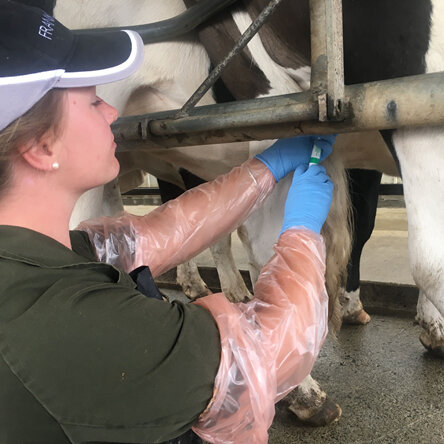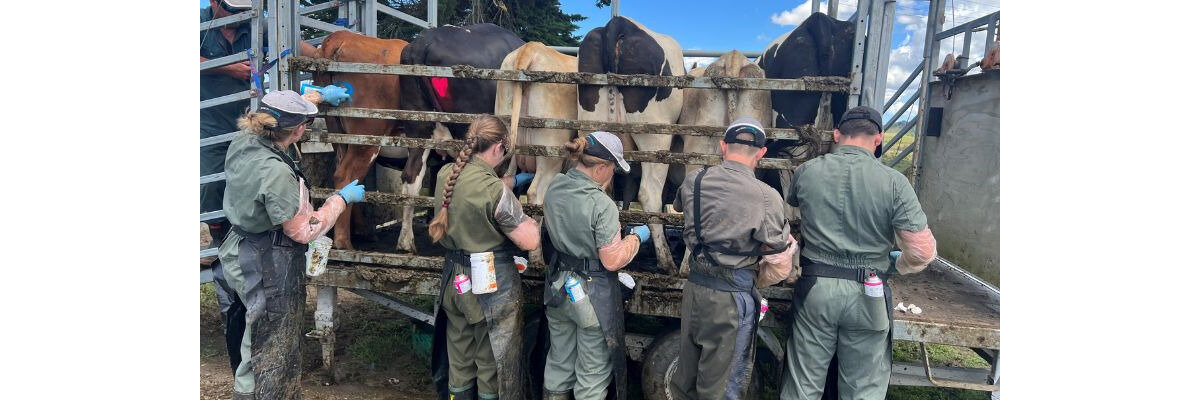Teatseal is an inert non-antibiotic internal teat sealant, which contains 65% bismuth subnitrate, in the form of a white paste. The teatseal forms a barrier, which prevents pathogens from entering the udder, thereby reducing the risk of mastitis in the dry period and early post-calving. Heifers can be teatsealed between 12 and 4 weeks prior to calving. Excellent hygiene is essential when administering teatseal and therefore it is important to be well prepared on the day of teatsealing.
Before Teatsealing:
- Ensure the heifers are adequately trained through the shed prior to teatsealing
- They need to be walked through the shed, rowed up, stopped, and udders gently touched. Training in small batches works well.
- We recommend this is to be done at least 7 times or until they are calm and settled in the shed.
- Hot water is very useful if available as it helps warm the teatseal and makes it easier to administer, plus it helps with keeping clean
- Arrange enough staff to help on the day
- 2 staff/50 heifers in order to help with rowing up heifers and help with restraining if needed
- Check the facilities
- Ensure heifers can be tightly grouped to prevent movement when being teatsealed
- Ideally a herringbone shed or a teatseal trailer
- Ensure heifers will be teatsealed 7 days after being trucked to reduce the risk of administering teatseal into a contaminated udder.
On the day of Teatsealing
- Allow enough time for the job
- Expect about 10-15 heifers teatsealed per person per hour
- Avoid keeping heifers on the race or feed pad prior to teatsealing as it increases risk of bacteria in the udders.
- Bring heifers into the shed quietly and reduce stress in heifers with gentle handling
- Bring heifers in no more than 30min prior to teatsealing
- The longer heifers are on the yard the higher the risk of bacteria entering teats prior to sealing. The heifers will also become more agitated with being on the yard for a long period of time.
- Split into smaller mobs if needed to reduce time spent on the yard (30-60)
- Ensure the heifers are put back quietly onto a clean paddock after teatsealing
- Reduces risk of mastitis.
- The feed pad is NOT suitable due to contamination.
After the day:
- Check heifers daily for 2 weeks after teatseal has been administered
- Check for swollen hot quarters
- Any heifers that look off-colour.
Recommendations from what we have learned
Jeneane Malan Vet Tech at our Taupiri Clinic





